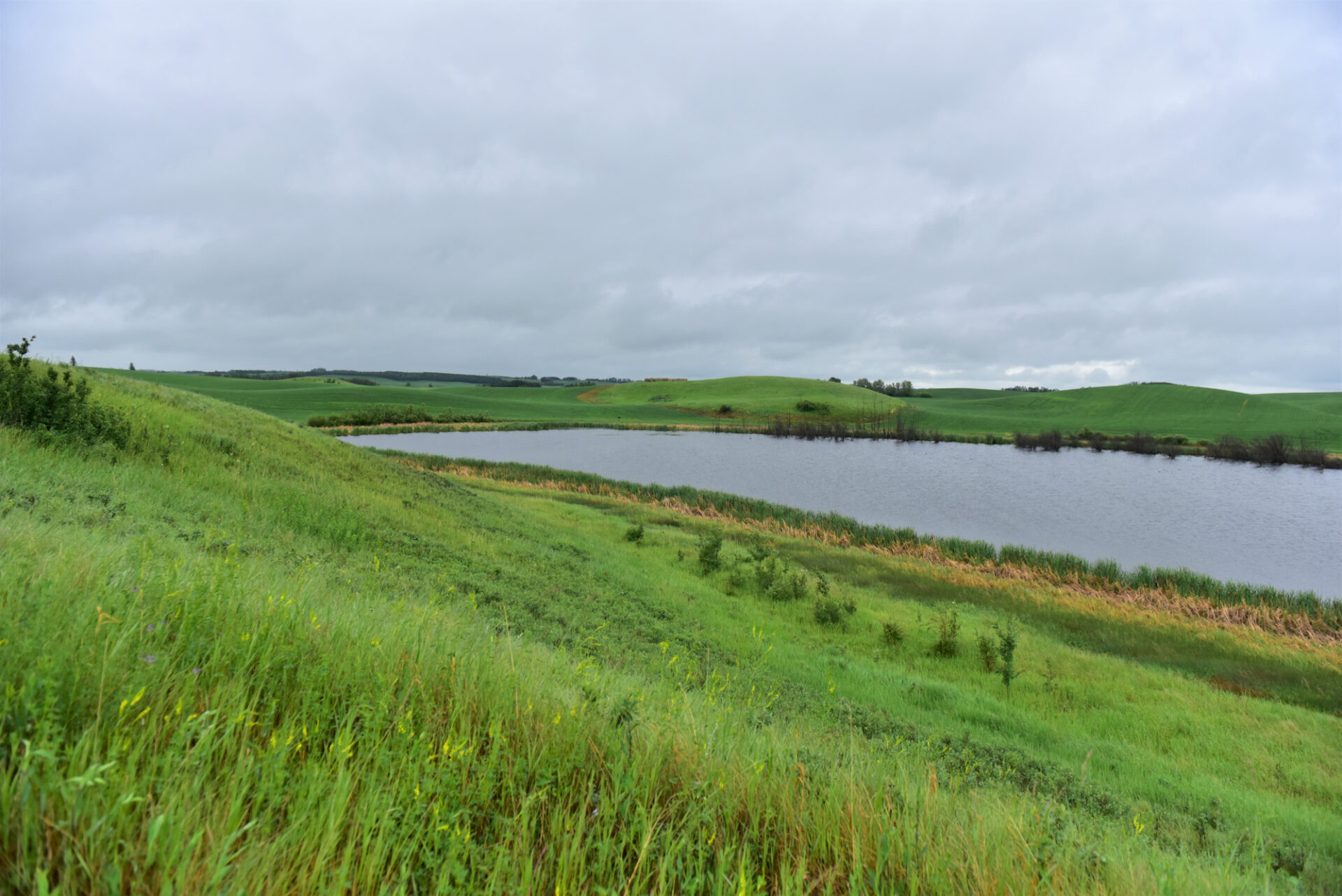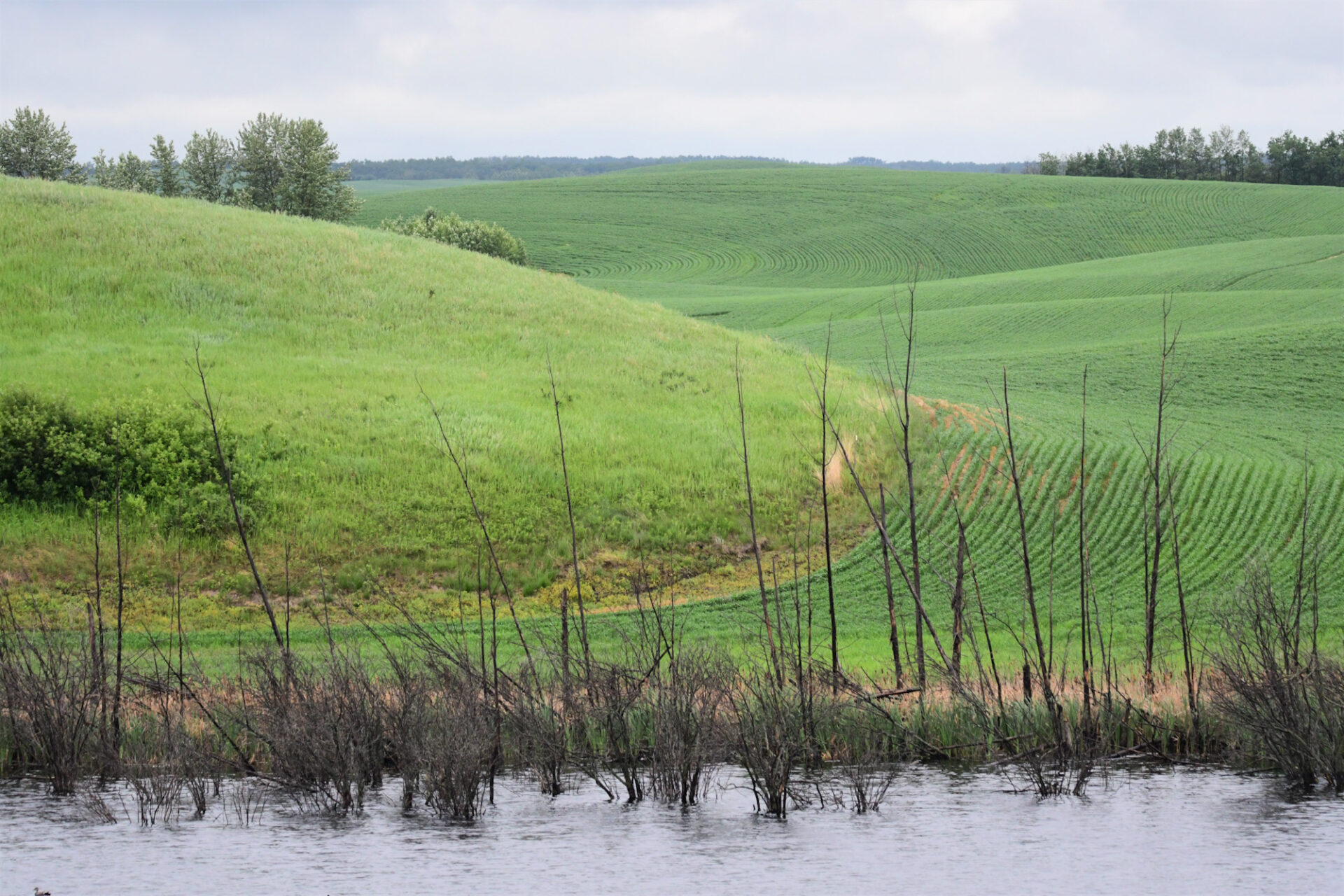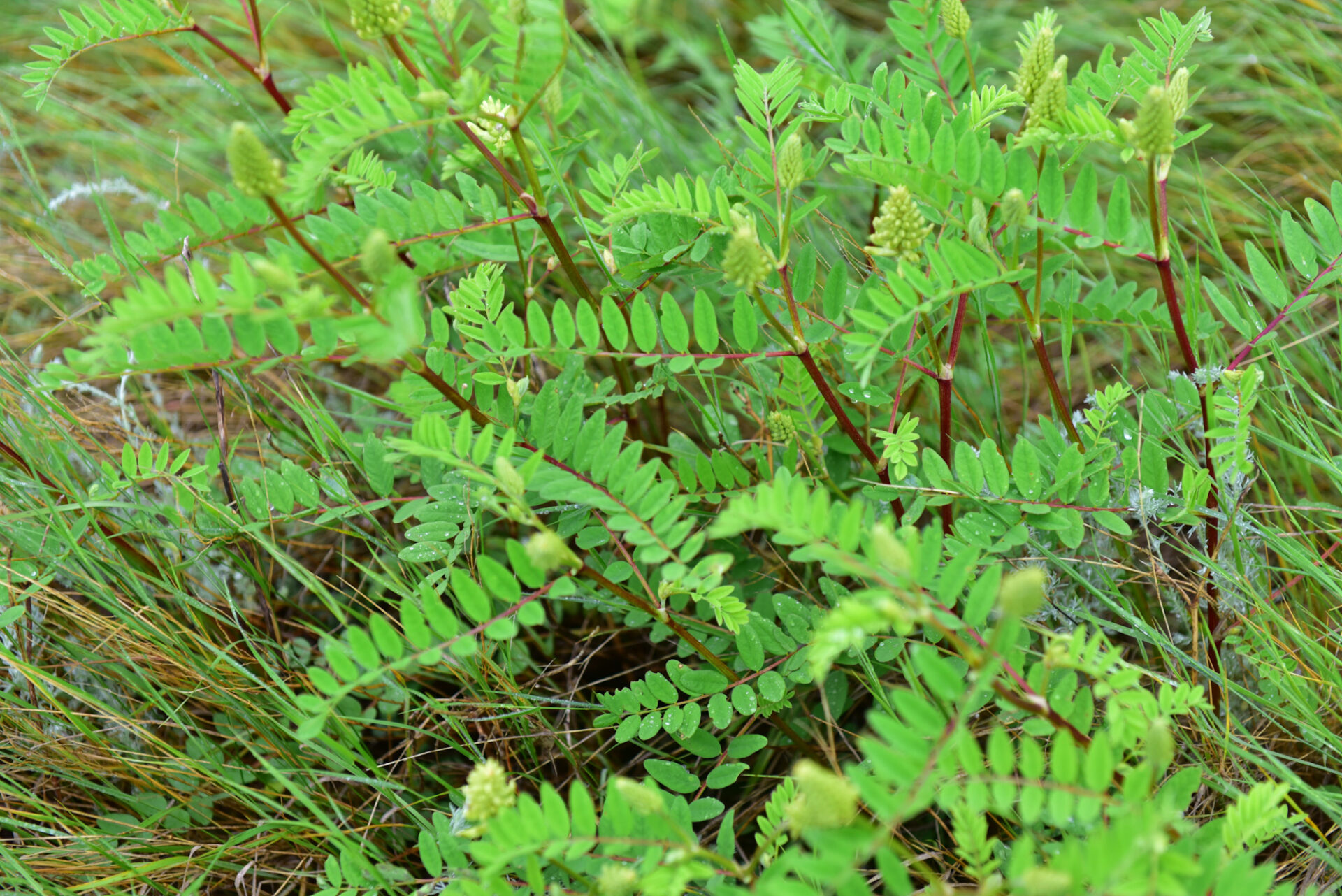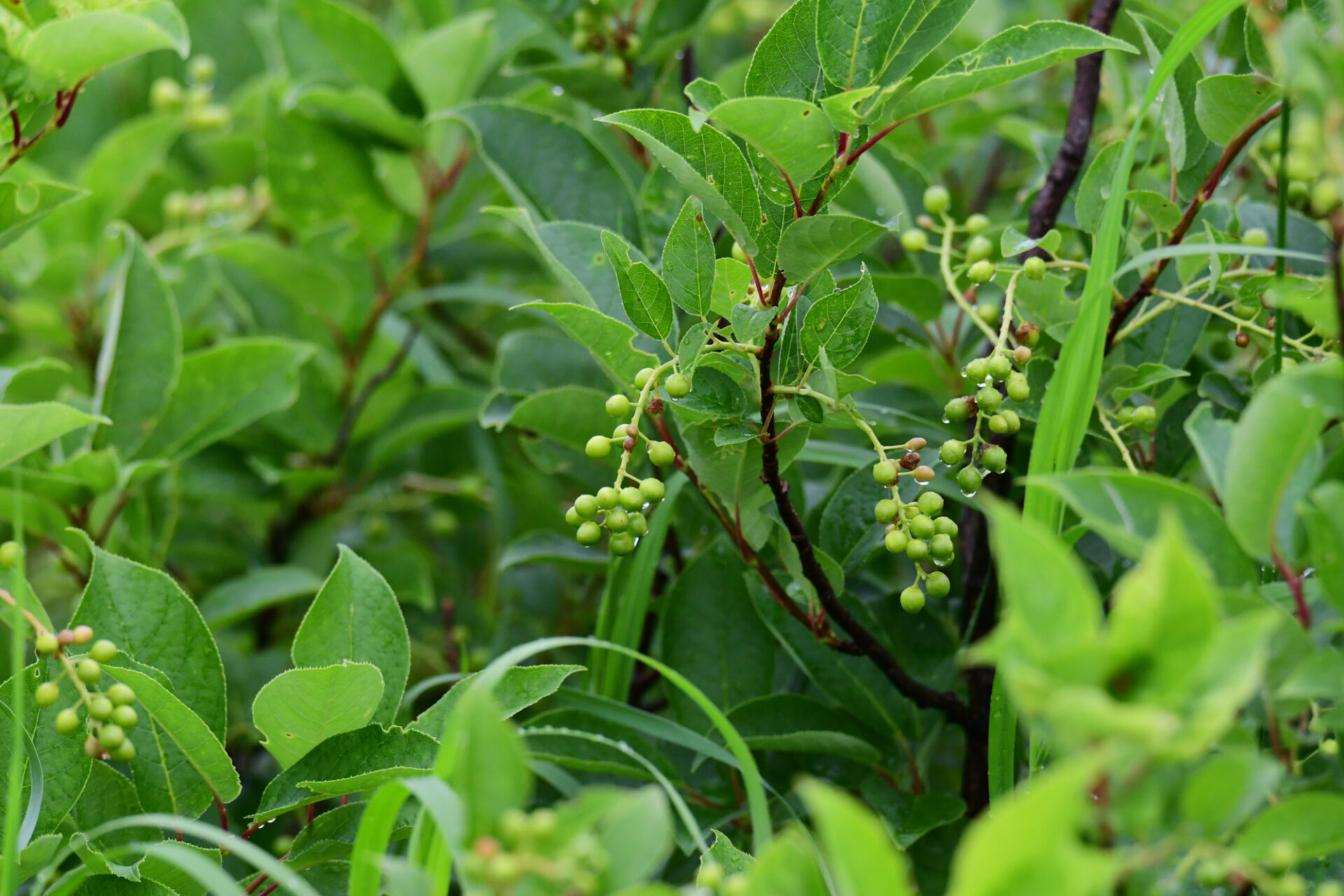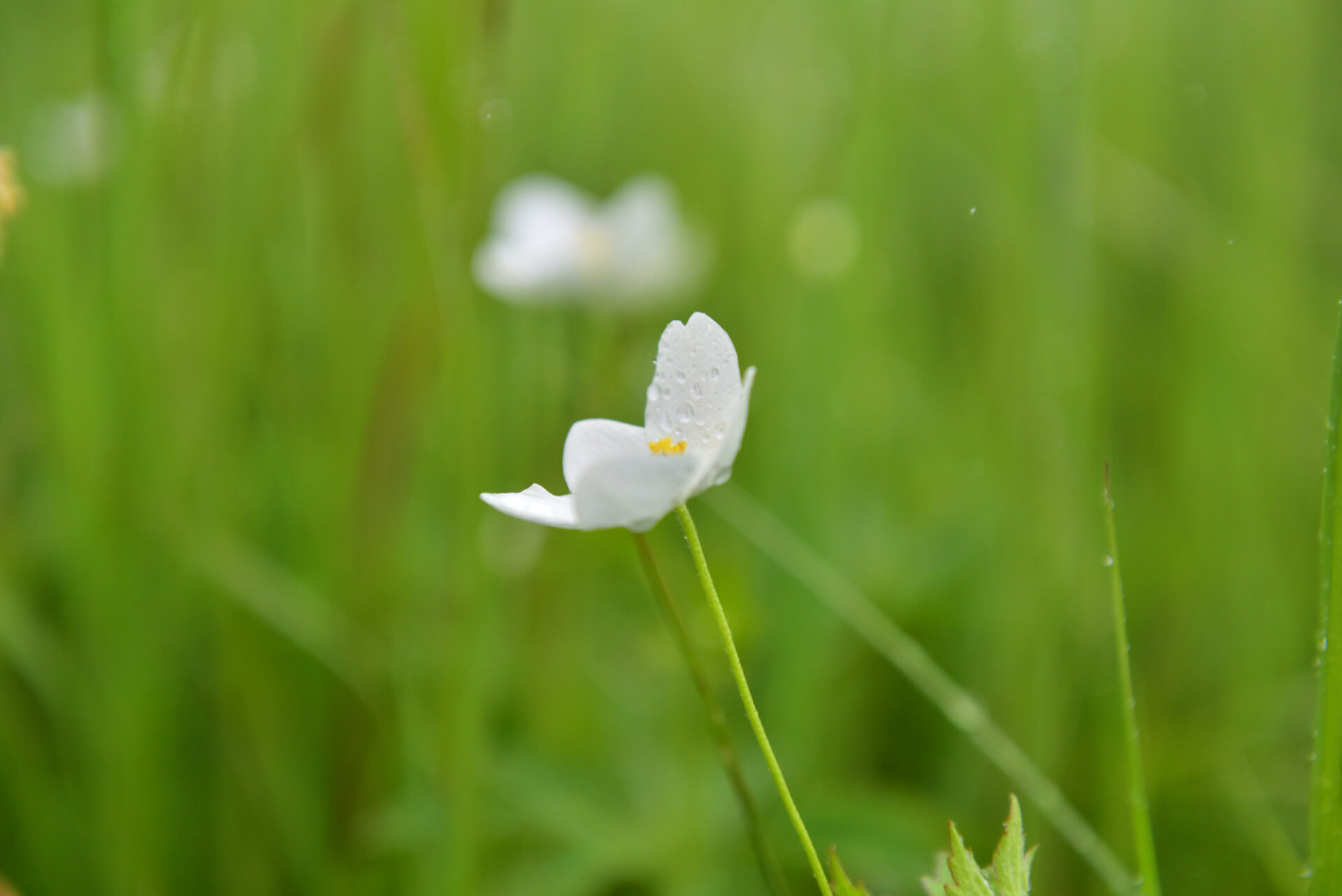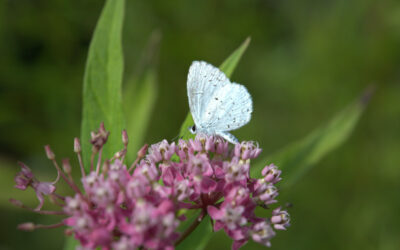Balancing productive land and the natural environment.
Retired farmer Roger Marcil may have shifted his focus from grazing Simmental cattle, but when one door closes another opens. In retirement, Roger has devoted himself to the well-being of his land.

The first participant in the ALUS Lacombe program, Roger joined ALUS in 2017. Since then, he has enrolled 38 acres into the ALUS program. The land, though, continues to support area producers, as Roger rents it out to crop-growers who cultivate wheat, barley and canola.
“We believe in putting something back. ALUS makes it easier. I like having the opportunity to see wildlife and plants you don’t see in everyday life,” says Roger.
With ALUS, Roger has enhanced three beautiful wetlands. At one site is a wetland with a buffer strip of native plant species around it and two lone hills either side of it. The buffer and hills are flush with new willow growth, white spruce, wild strawberry, two varieties of vetch, buckbrush, snowberry, chokecherry, wild licorice root, wild rose, saskatoon and raspberry.
The lone hills are a good fit for the ALUS program, because they’re too steep to farm effectively, though they were cropped and grazed in the past.
The wetland has shown great success as an ALUS project and now permanently holds water yearround. It’s come a long way from dry periods in the late 80s and early 90s when the Marcils hayed the area.
A part of Roger’s conservation mission is to preserve large patches land for wildlife habitat: “Narrow strips mean the predators just eat everything—waterfowl and birds are served up as a buffet.”
Roger’s ALUS projects have done wonders in this regard. Some of the species that have been identified on his ALUS projects include saw-whet owls, coots, common goldeneye and swallows.
At another of Roger’s ALUS project sites is a buffer of trees and native vegetation that runs along a railway track. On the other side of the tracks, Roger delays the hay cut to allow nesting bird species and other wildlife to raise their young. The delayed haying also helps support pollinators and prevent sediment from entering the waterbodies on the land.
Through these ALUS projects, along with a number of other wetlands that he has conserved, Roger has dedicated himself to improving the landscape around him.
Roger’s projects create wildlife habitat through support structures, pollinator habitat through direct planting and native encroachment of flowering species, and improved water quality. The end result is cleaner water, improved biodiversity and more habitat, music to the ears of an enthusiastic birder like Roger.
All photos by Myrna Pearman.


